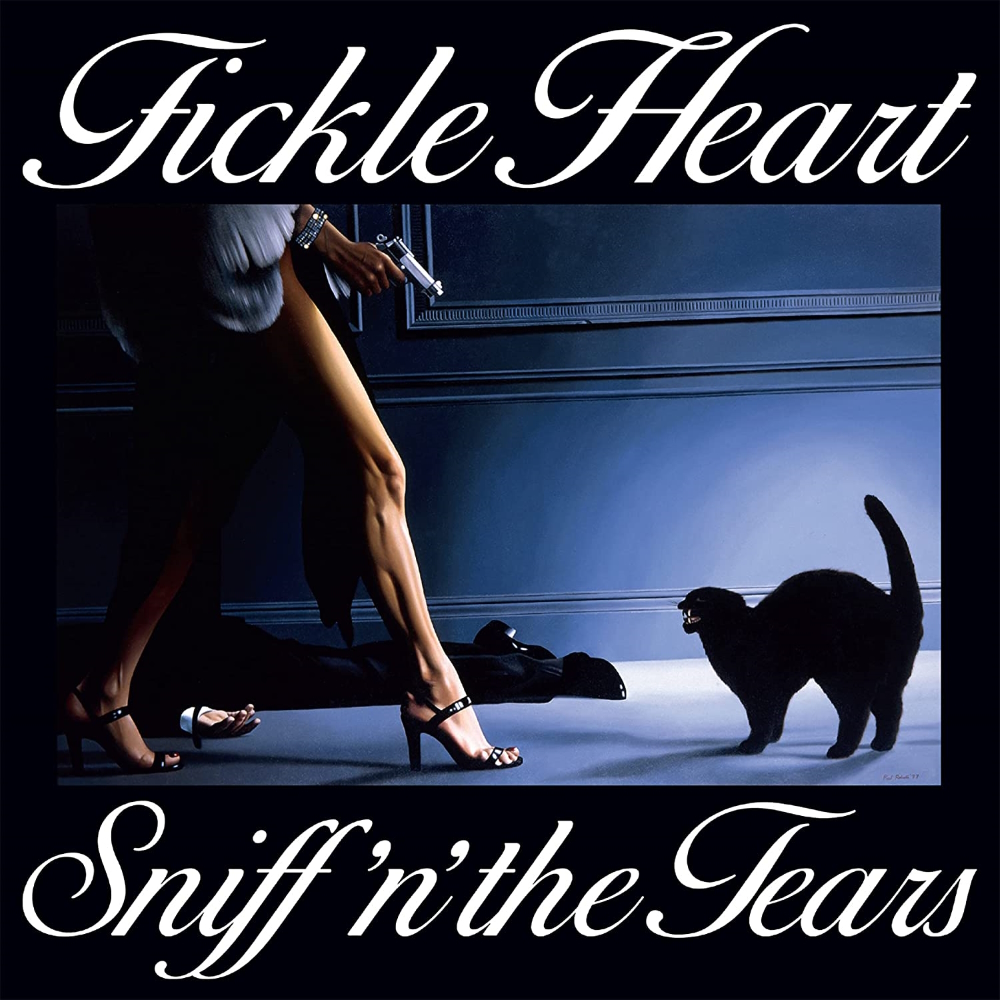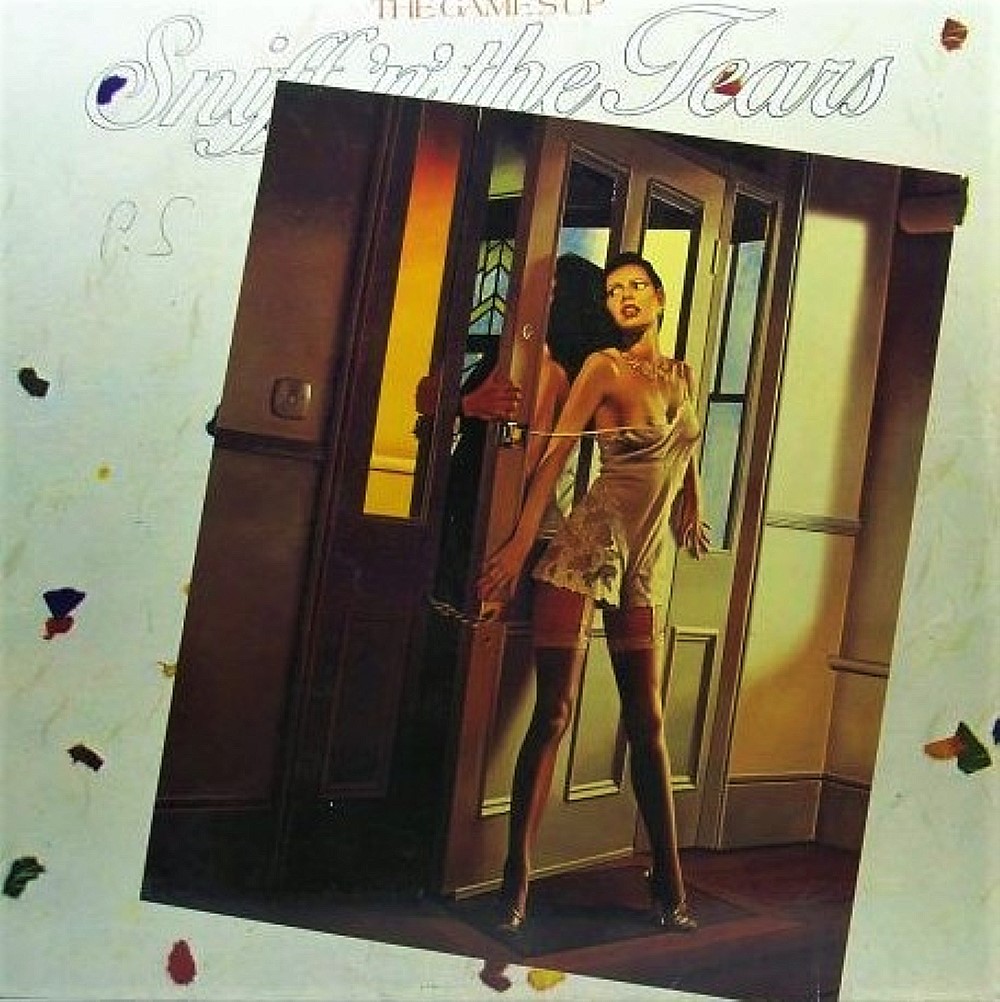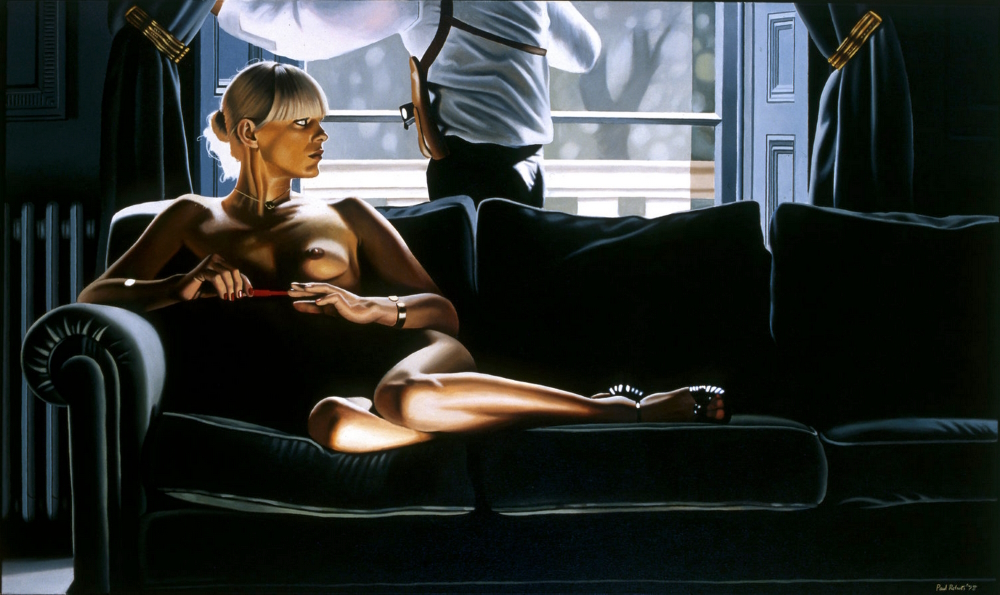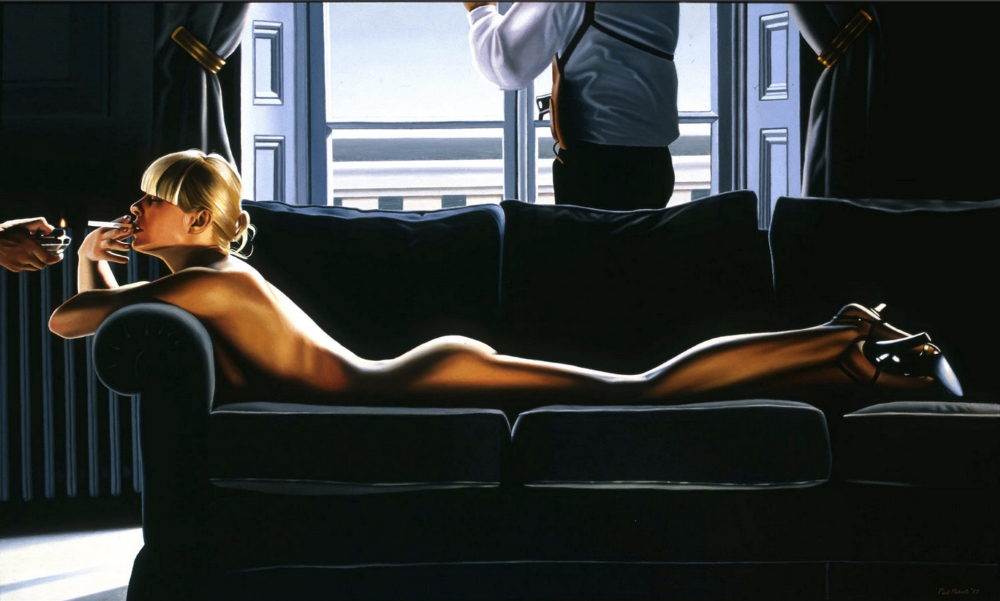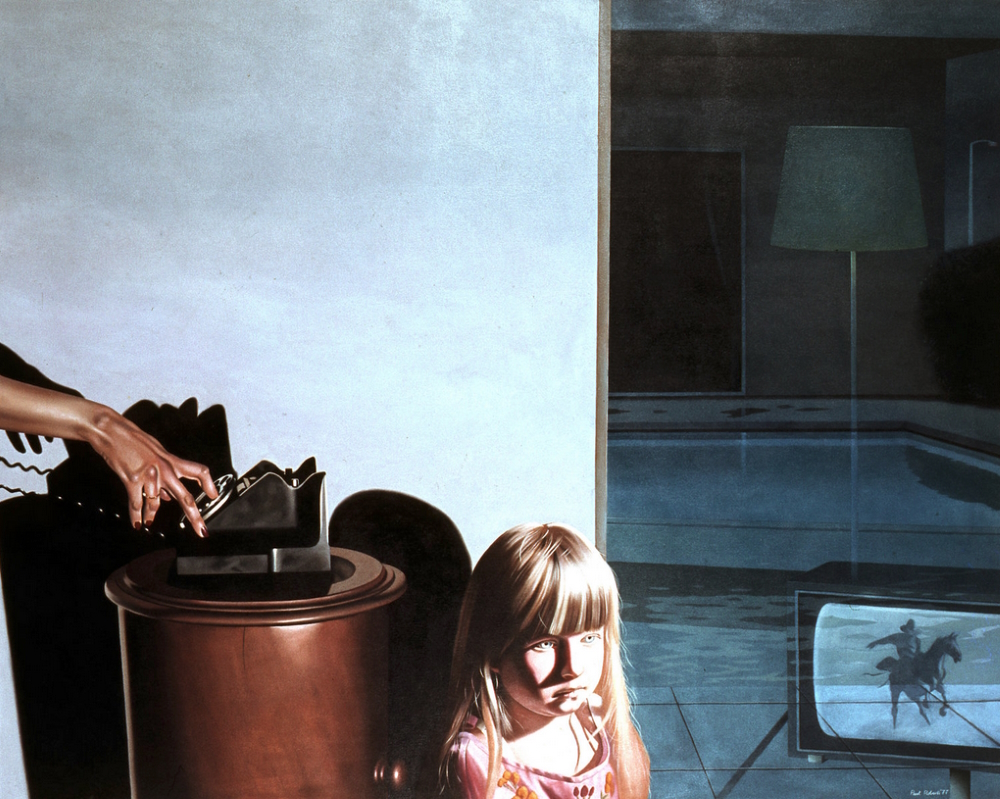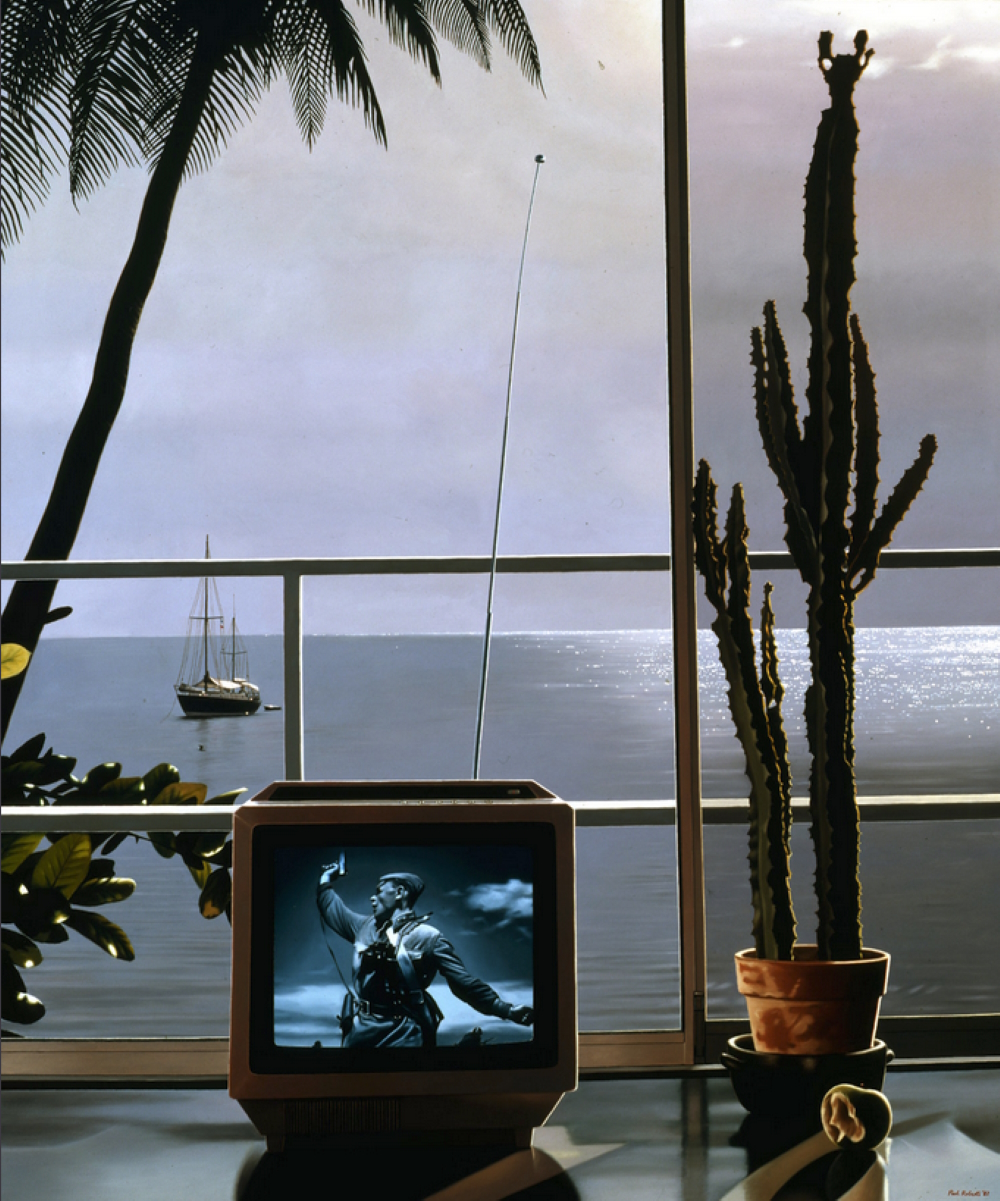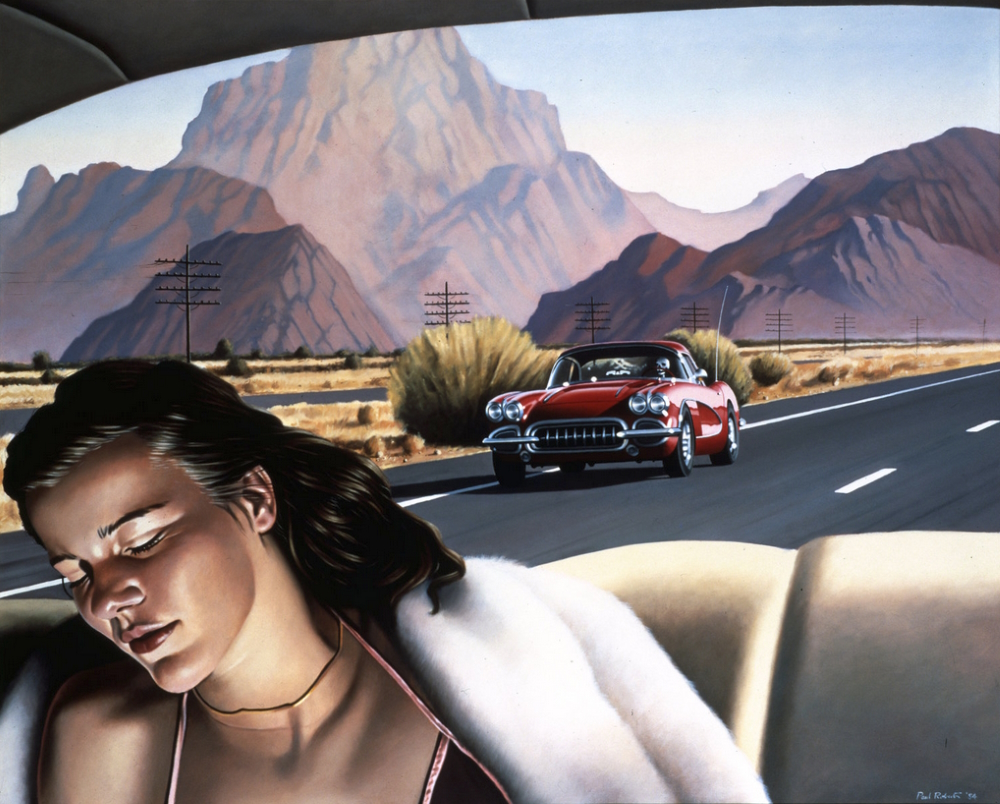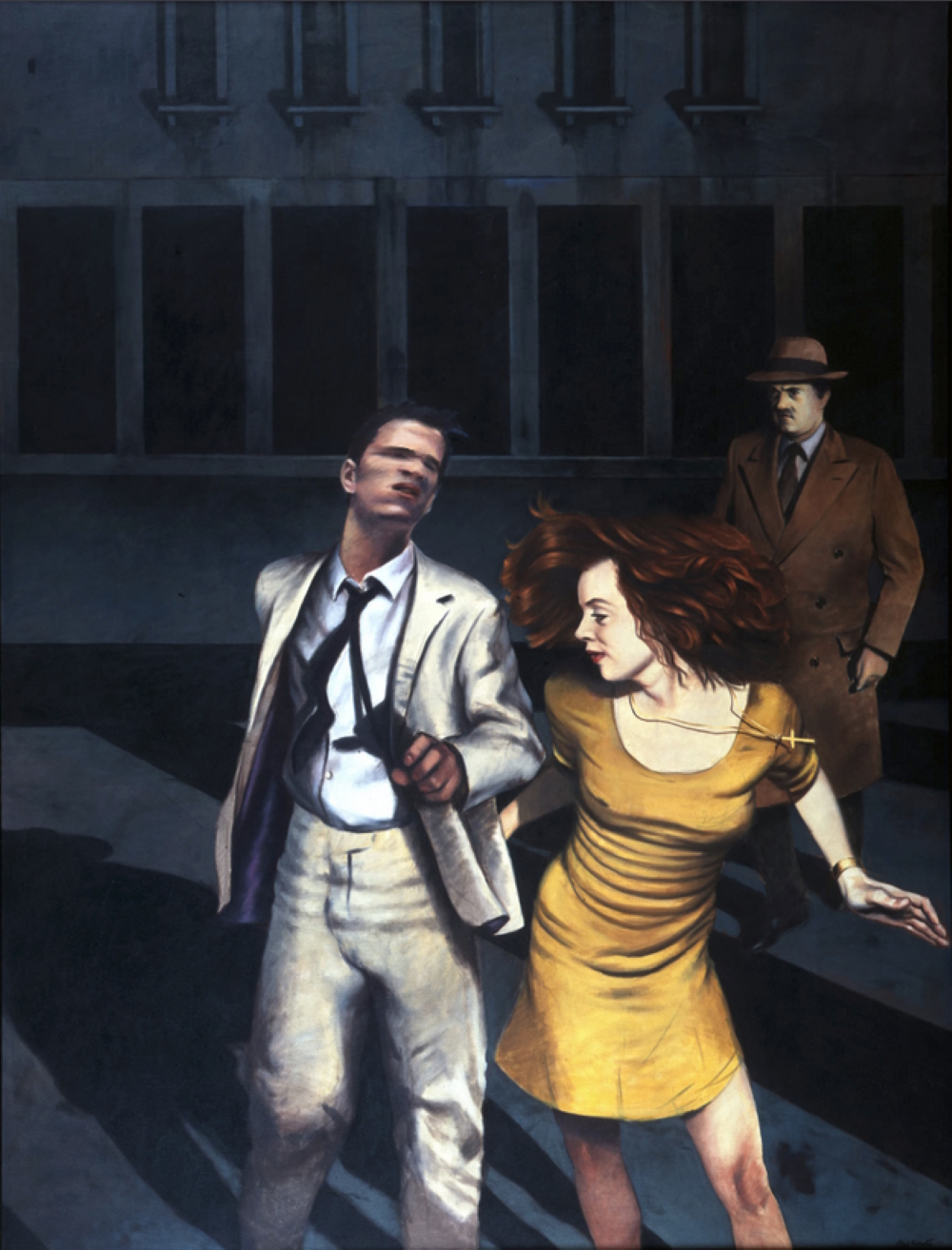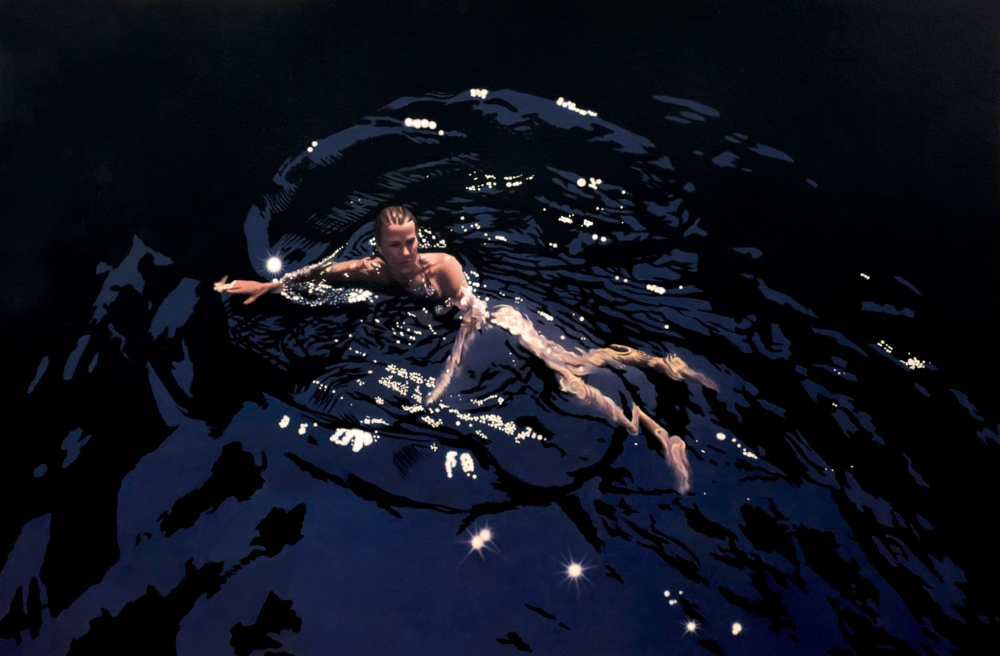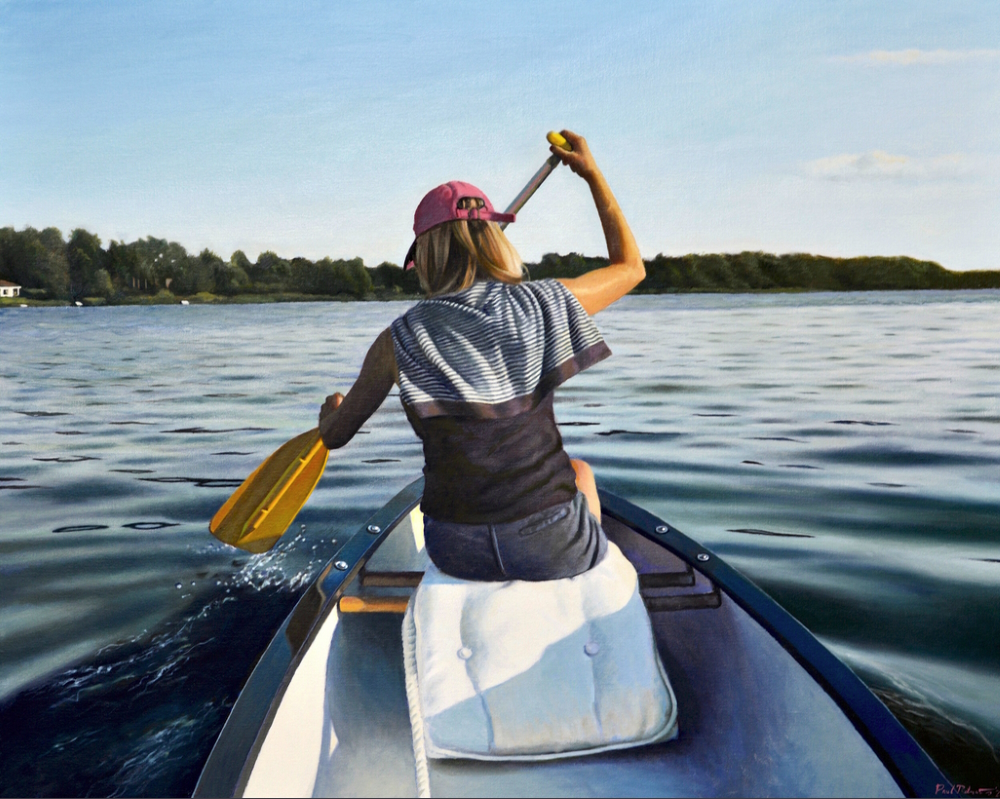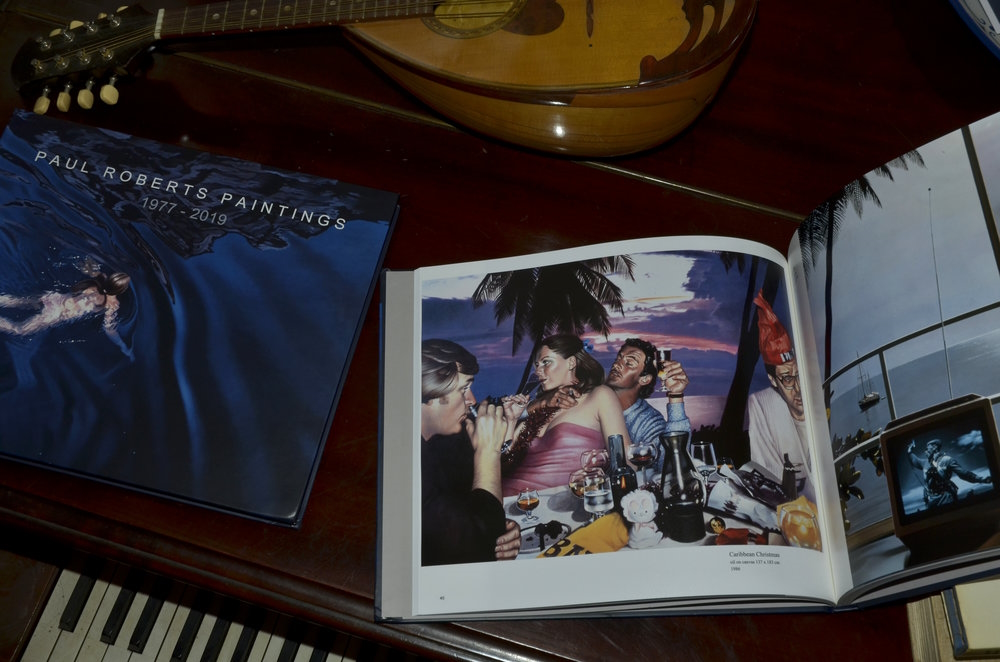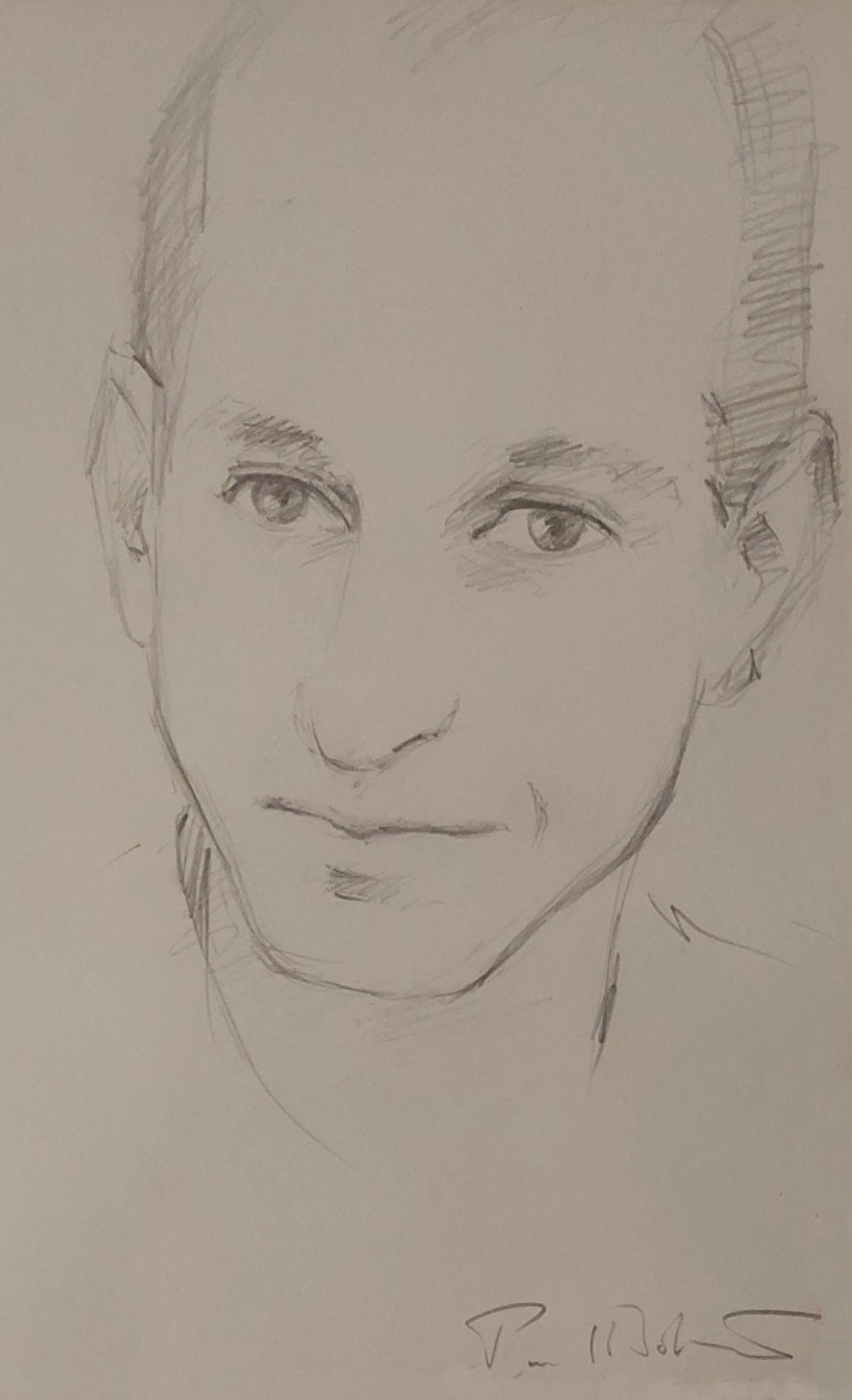Paul Roberts
('Driver's Seat'-)singer / songwriter / figurative photorealistic painter
GB
Music and paintings are what this creative became famous for. ‚Driver’s Seat‘, the singer/guitarist’s composition for his band Sniff`n`the Tears is the most popular track he‘s associated with and even went to number 15 in Billboard’s Pop Single Charts. Besides that the British has made a name as a figurative realistic painter whose works have been used as album covers for his own artistic output right from the debut 'Fickle Heart' onwards – paintings that also would perfectly illustrate the books by legendary Raymond Chandler, one of the pioneers of American Hardboiled novels, because the visual motifs are often erotic as well as criminal/mysterious!
Paul Roberts
('Driver's Seat'-)singer / songwriter / figurative photorealistic painter
GB
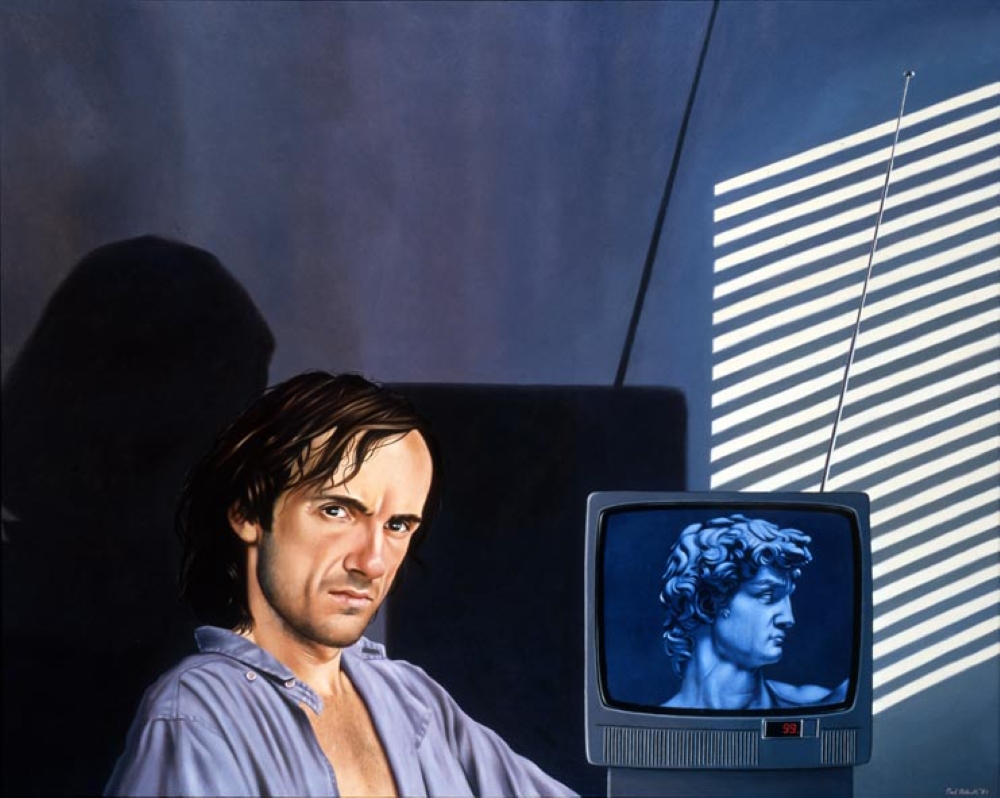
"Cats have nine lives" is a popular phrase. Something similiar applies to one or the other song from time to time too. Take ‚Driver’s Seat‘ by Sniff`n‘the Tears for example. After its release in 1978 it wasn’t an immediate chart-success. The catchy pop tune whose genesis dates back to a demo recorded in 1973 took up speed slowly. While outside factors derailed a potential break in its native Great Britain, the single was more successful in other countries. It reached number 13 in Australia, the top 20 in the US and Canada in fall of 1979. One year later The Netherland‘s top 5 were conquered. The song that, according to composer/writer Paul Roberts „isn't about driving, but rather fragmented, conflicting thoughts and emotions that might follow the breakup of a relationship" experienced its real breakthrough much later - in 1991, because of a Nissan tv-advert and then particularly in 1992, thanks to a Dutch tv-ad for Pioneer Stereos. „It had another popular resurgence after been prominently featured on the soundtrack of the 1997 film Boogie Nights“ (Wikipedia). In 2002 the commercial of German car audio manufacturer Blaupunkt renewed the popularity of this radio favourite. The track also appeared in The Walking Dead Season 2 Episode 10 ‚18 Miles Out‘ (2011) and the movie 'Anchorman 2: The Legend Continues' (2013) .“ No suprise that the official video of ‚Driver’s Seat‘ can record 18 million clicks on YouTube and keeps on counting...
Paul Roberts, who is Sniff`n'the Tears' sole constant member, was born in Tiverton (Devon) in 1948 and brought up by artist parents in Wales. He studied art at Newport, Cardiff and London (Goldsmiths University). Gaining early recognition in the 1970s, his career as a painter was interrupted when he had worlwide success with his rock group. Commitments to music meant that until 2000 time needed to develop his career as a painter was to some degree curtailed.
Asked by athenscalling.gr about the cause of inspiration for his paintings Paul Roberts answered: „People. I’m interested in humanity and all its foibles. The way we express ourselves. The intricacy of that expression and the beauty of the world.” His artworks in oil on canvas have been exhibited in one man shows in Amsterdam, London and Paris; group exhibitions featuring his paintings took place in New York and Milan in addition to the previously mentioned cities.
On the artist’s website it is announced that not only most of the paintings on display can be ordered as signed prints on Arches Aquarelle Rag Paper but there’s the book 'Paul Roberts Paintings 1977-2019' (132 pages, including portraits and commissions) available also.
Paul Roberts lives in Somerset (Great Britain), where he has continued to paint and make music (recording under the band's name and performing live with Sniff’n’the Tears' guitarist Les Davidson as an acoustic duo).
Interview April 2023
In the „Driver’s Seat“ while being a musician AND a painter: humanity and all its foibles as the cause of inspiration
INTUITION/IMAGINATION
How does intuition present itself to you – in form of a suspicious impression, a spontaneous visualisation or whatever - maybe in dreams?
Intuition for me comes from a lifetime of experiences that were informed by sheer love, horror or interest in things and what can extrapolated from that. The working process then sets off the adventure of contextualising something new.
?: How do you come up with good or extraordinary ideas?
By starting with something. An idea or a photo of a place or a sky or a landscape that can give me an idea, For instant for "The Passenger" I was in a car driving through the Arizona Desert when I saw a Corvette Stingray behind us. So I took a photo of it. This led to putting a sleeping woman on the backseat and a skeleton driving the Corvette.
?: Do you feel that new creative ideas come as a whole or do you get like a little seed of inspiration that evolves into something else and has to be realized by endless trials and errors in form of constant developments up until the final result?
Sometimes they come as a whole, particularly in the case of commissions, but often as I said starting with something that leads to more. Occasionally something doesn't work so I abandon it.
INSPIRATION
What inspires you and how do you stimulate this special form of imaginativeness?
Life inspires me, the human comedy, how people create their identities and project that to others. Also, beauty in all its forms, natural and created.
Film, photography, illustration, TV, we are bombarded with imagery which is bound to inform the way we see things and also ourselves. I want to include that.
?: How do you filter between ideas worthwhile pursuing and bad ones that you just let go of?
If it is not worth pursuing don't try to rescue it just move on.
Has it to appeal to you primarily or is its commercial potential an essential factor?
I have to want to do it.
CREATIVITY
Which time/place/environment suits your creative work process the best (tranquillity or pressure) and which path do you take from theory/idea to creation?
When I started to sell in the Seventies I had deadlines and I worked flat out. I prefer to take my time. I paint only for myself unless say in the case of portraits I have to consider the feelings of the sitter.
What is better in the realization process: speed and force creativity i.e. grasp the magic of the moment, or a slow, ripening process for implementation/elaboration?
Both are good and can deliver.
?: Do you have any specific strategies you use when you are feeling stuck creatively?
No. If I'm not feeling like painting I don't.
How important are self-doubt and criticism (by others) during such a process i.e. is it better to be creative on your own, only trust your own instincts, or in a team?
I work only for myself. I was advised by my tutor in Art School to play the game if I wanted to succeed. I have no inclination to do that.
Should a creative always remain true to him-/herself including taking risks & going against the flow or must one, for reasons of (commercial) survival, make concessions to the demands of the market, the wishes of clients and the audience’s expectations?
As I said it is probably sensible to do that and to some extent you must. But you also have to believe that you can succeed on your own terms. That some people will 'get it'.
The commercial aspect can have an influence. In the Nineties I experimented with a much freer and perhaps more imaginative style and it didn't sell. So of course you are influenced by what people like. I was told by a gallery owner that "people don't like other people's faces on their walls". I paint people! but sometimes in a way that does not confront the viewer, which is about all that I will concede.
?: How is innovation still possible if one has established a distinctive style and, just in case, is it good to be ahead of one’s time even one hazards not being understood?
I don't want to be ahead of my time I want to paint what I want, even if some people dismiss it as irrelevant.
?: In case of failure or - worse - a creativity crisis how do you get out of such a hole?
Creativity can be spontaneous but is more likely to come from application. First stretch the canvas and then decide what to do. I take photographs to work from and have a lot photos I can use as a starting point, which I can then build from.
SUCCESS
?: “Success is the ability to go from one failure to another with no loss of enthusiasm.“ Do you agree with Winston Churchill’s quote?
I do agree with Winston Churchill on that one. If you enjoy the formula then fine but the adventure is in improving and exploring the possibilities.
?: Is it desirable to create the ultimate/timeless work, but doesn’t “top of the ladder” bring up the question of “what’s next?” i.e. isn’t such a personal peak “the end”?
I hope that artists are always trying to create the ultimate timeless work and in that quest will always be frustrated.
?: Should/can one resist the temptation to recycle a ‘formula’ one’s successful with?
Yes if it is a formula. Hopefully it isn't.
MY FAVORITE WORK:
I could not specify which painting I am most proud of. I do know which are the most popular: "Angel Redeemer", "Still Life" and "The Passenger."

